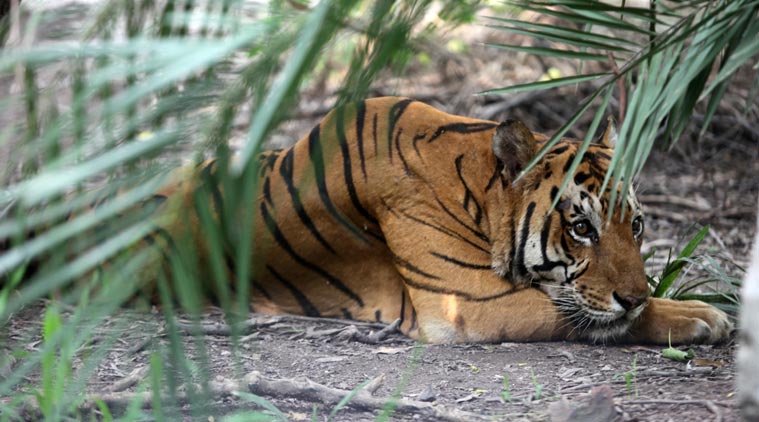Stay updated with the latest - Click here to follow us on Instagram
Complete picture: All tigers in state covered in camera trap op
State claims it has a tiger population of 202, forest dept collaborates with NGO to capture them all.
 While 138 of the 202 tigers were found in the core (protected) and buffer areas of the state, 64 were found in the adjoining outside areas.
While 138 of the 202 tigers were found in the core (protected) and buffer areas of the state, 64 were found in the adjoining outside areas.
Tiger population estimates based on line-transact and mark capture-recapture method always give a range of population, with the claims often being contested for their accuracy. However, possibly for the first time anywhere in the country, a state’s claim of tiger count has been established beyond doubt with Maharashtra forest department’s NGO-supported camera trap exercise capturing images of 202 individual tigers — the exact number it had claimed to be roaming its forests.
The significant portion of the state-wide exercise was conducted by the department in league with NGO Wildlife Conservation Trust (WCT) between November 2014 and June 2015 under WCT-USAID “Tigers Matters” project. The 202 photographed tigers are exclusive of the cub population which could be anywhere in the range of 100, according to Anish Andheria, president of WCT. “Maharashtra has become the first state in the country to conclusively photo-capture all adult tigers found within its borders,” Andheria told The Indian Express.
While 138 of the 202 tigers were found in the core (protected) and buffer areas of the state, 64 were found in the adjoining outside areas. The study also established existence of 180 leopards outside core or protected areas.
The district of Chandrapur that has Tadoba-Andhari Tiger Reserve, is home to 108 tigers, making it perhaps the most tiger-populated district in the country.
“We undertook the exercise with complete scientific rigour as is done in the regular tiger census. We set up trap cameras in every three square km area after dividing the areas into grids. The database is the product of the camera trap exercises conducted as part of the All India Tiger Estimate 2014 and additional monitoring exercises conducted outside protected areas (PAs) in the state. In total, 7,771 sq km of tiger habitat was surveyed within and outside PAs of Maharashtra, and camera trap data collected over a massive 68,157 camera trap days (one camera trap day is 24-hour deployment of one camera). Of the total effort, 3975 sq km fell outside PAs amounting to 27,970 camera trap days, The information collected from genetic studies conducted alongside monitoring exercises has established the connectivity of tiger populations in different PAs and will help forest officials design more robust wildlife management policies for the intervening” Andheria said.
The Tiger Count
Reserve Core areas Buffer areas
TATR 56-52
Melghat 40-2
Pench 23-9
Navegaon-Nagzira 7-0
Sahyadri 3-0
Bor 3-1
Tipeshwar and Pandharkawada 6-0
Radio-collared tiger rediscovered
Kala, Maharashtra’s first tiger to be radio-collared, was spotted with a cub on a WCT camera trap in Brahampuri in 2015. On October 13, 2011, forest officials rescued Kala from a well in Tass near Nagpur. She was treated for injuries, fitted with a radio collar and released on November 27, 2011. Officials monitored her movements till March 2012 and watched as she crossed 454.65 km in 120 days, often moving through human-dominated landscapes. Spotting Kala on a camera trap almost four years later, wildlife biologist Vidya Athreya, who had done Kala’s radio-collaring and monitoring for some time, said, “When I saw the picture of Kala and her cub, I felt like a grandmother.”







